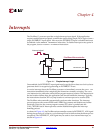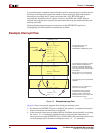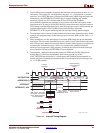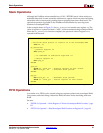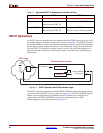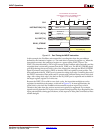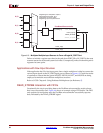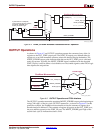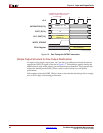
PicoBlaze 8-bit Embedded Microcontroller www.xilinx.com 47
UG129 (v1.1.2) June 24, 2008
Stack Operations
R
Stack Operations
Although the PicoBlaze microcontroller has a CALL/RETURN stack, it does not have a
dedicated data stack. In some controller architectures, register values are preserved during
subroutine calls or interrupts by pushing them or popping them onto a data stack. The
equivalent operation is possible in the PicoBlaze microcontroller by reserving some
locations in scratchpad RAM.
In the example shown in Figure 5-4, the my_subroutine function uses register s0. The
value of register s0 is preserved onto a “stack”, which is emulated using scratchpad RAM.
When the my_subroutine function completes, the preserved value of register s0 is
restored from the stack.
FIFO Operations
In a similar vein, FIFOs can be created using two separate pointers into scratchpad RAM.
One pointer tracks data being written into RAM; the other tracks data being read from
RAM.
See also:
• “STORE sX, Operand — Write Register sX Value to Scratchpad RAM Location,” page
112.
• “FETCH sX, Operand — Read Scratchpad RAM Location to Register sX,” page 98.
Figure 5-4: Use Scratchpad RAM to Emulate PUSH and POP Stack Operations
NAMEREG sF, stack_ptr ; reserve register sF for the stack pointer
; Initialize stack pointer to location 32 in the scratchpad RAM
LOAD sF, 20
my_subroutine:
; preserve register s0
CALL push_s0
; *** remainder of subroutine algorithm ***
; restore register s0
CALL pop_s0
RETURN
push_s0:
STORE s0, stack_ptr ; preserve register s0 onto “stack”
ADD stack_ptr, 01 ; increment stack pointer
RETURN
pop_s0:
SUB stack_ptr, 01 ; decrement stack pointer
FETCH s0, stack_ptr ; restore register s0 from “stack”
RETURN





